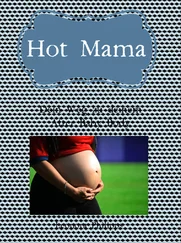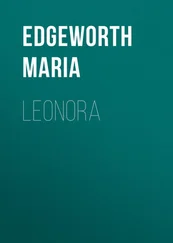‘How well you are doing in Inés Amor’s hands!’ Gunther Gerzso congratulates her. ‘She is the only one who can persuade a buyer to do as she wishes.’
Leonora and her children attend Dante’s Inferno: The Ballet choreographed by George Balanchine, who a few days later turns up on the doorstep with a suitcase stuffed with plans and programmes so that Leonora can design the sets and the wardrobe. Opting for a change of surroundings, she invites Balanchine into the kitchen and offers him tea.
‘How can I spread out my floor plans if the cat is sitting on the table?’
‘Pablo, get Kitty.’
Pablo, in a night shirt since it’s already bed-time, chases after the cat who, in its turn, is intent on catching a mouse; but since Kitty can hardly see any more, the little mouse gets into the sleeve of his night shirt and, when he realises it, the boy races up and downstairs, creating the maximum rumpus.
‘Ma, the mouse is biting me, the mouse is eating my arm.’ His screams grow more and more shrill. Although they are now very old, Dicky and Daisy bark ceaselessly. Balanchine, who has been unable to take so much as a sip of tea, gets to his feet and joins in the shouting:
‘This is no place to work, it’s impossible! We don’t have a single moment of peace, this house is like a mental asylum!’
He packs up his things and departs.
‘Why did you do that?’ Chiki asks Pablo.
‘The mouse crept into my sleeve, and I only noticed when it began to race up my arm.’
‘Now it’s high time you went and said sorry to your mother.’
Chiki punishes him with his silence. In contrast, Leonora consoles him:
‘Don’t be afraid, you didn’t do anything wrong, it’s Balanchine who has made an idiot of himself. If he’d been seriously interested, he would have put up with it and stuck around.’
Leonora paints without a pause. It is 1957, and her second show at the Antonio Souza Gallery brings in fresh admirers.
The entire attention of the vanguard is focused on the Galeria Souza, where the most unexpected artists are always on show. The public is just as unusual. María Félix, Juan Rulfo, Maka Tchernichew, Patsy O’Gorman, Mathias Goeritz, Gunther Gerzso and Juan Soriano chat to Rufino Tamayo, who serves himself a tequila. Bridget Tichenor leaves with Pedro Friedeberg, her kindred spirit. ‘You have to see the de Chirico that Bridget has hanging in her living room,’ Antonio Souza tells Eugenia Orendain. Souza, who wears a little blue flower in his lapel that he — oddly — calls his paint-brush, provides a running commentary that would have caused the Marquis de Sade or the Bloody Countess to blush. Cynical and witty, he alters the names of his painters and ascribes a Benjamin López to Francisco Toledo. Paul Antragne, a young debutant, locks himself in the bathroom to consume his drugs. The smile worn by Pedro Friedeberg, de Souza’s close friend, is a cause for pleasantries, since ambassadors, cultural attachés, Bona de Pisis and André Pieyre de Mandiargues are all seated on his wooden chairs in the shape of a hand. In 1938, Kurt Seligmann convulsed the whole of Parisian society with a chair he called ultra-furniture supported by three sensual women’s legs. Finally, ‘Mexiquito’ — little Mexico — is pulling aside its nopal curtain, just as José Luis Cuevas predicted when he gave the muralist David Siqueiros a trashing, before bestowing another on Diego Rivera. ‘Out of my way, juvenile mouse-face!’ riposted Rivera. One of Leonora’s paintings is included in an exhibition at the Museum of Contemporary Art in Houston called The Disquietening Muse: Surrealism. ‘Now you see how I succeed in internationalising my painters!’ cries the poet Souza, owner of the most snobbish gallery in the country.
Each time Edward James returns from a journey, he invades their house with a cohort of serpents and macaws, which the Hotel Francis won’t allow him to bring indoors. The iguanas hang out on the flat roof, the parrots and kites flit about indoors, and the tortoises get lost in the corridors; five parakeets imported from Manaus chatter without pausing for breath, and seven badgers — so fierce that not even Kitty will go near them — shit all over the house.
He puts them in the care of Leonora; in the end, even she complains.
‘Could you not take them up on the flat roof so that they can get some sun, Leonora?’ Edward continues persistently.
‘How about he puts those socks of his, the ones he always leaves around for us to find hidden behind bedroom doors, out there for a bit of a bleach in the sun?’ protests Pablo.
Edward is by now the patron of the Weisz family. This clearly allows him to feel at liberty to leave his disgusting yellow socks in any corner of any room, which deeply offends Pablo. James’ eccentricities irritate Leonora too, at times, and she returns to the house, her eyes black with anger. Even so, Leonora always enjoys going out with him. That was how James came to invite her to dine at the University Club on the Paseo de la Reforma, and when the time came to pay, pulled out an envelope stuffed with only one peso notes and asked if she had any cash on her. Leonora grew enraged: ‘Now we’ll have to stay and do the washing up, since I don’t have a solitary centavo on me.’
The Weisz household looks after the reliquaries he steals from rural churches and dusty rectories: saints missing hands or whole arms, and a beautifully ornate churrigueresco — a Mexican baroque crucifix — that James was to reclaim two or three years later.
Leonora has less patience than Kati with armadillos and iguanas. Pablo is shocked that James uses shampoo for washing his hands, and leaves the towels flung down on the floor; that a whole toilet roll gets used in one go; and that he leaves the bathroom floor soaking wet, whereas he and Gaby are always obliged by their parents to clean up after themselves.
‘Mama, we really can’t stand James any more,’ Pablo tells her.
‘You may not be able to stand him, but without him we’d have nothing to eat.’
Gaby shakes his head in resignation, while Pablo shows his indignation: ‘I would prefer to die of hunger than put up with his smelly yellow socks any longer.’
‘And you haven’t even read his poetry. It’s even worse than his socks!’ Gaby offers by way of consolation.
46. A PALACE IN THE JUNGLE
EDWARD JAMES ARRIVES BY CAR from the United States, using the newly inaugurated Mexico City — Laredo freeway and crossing the ancient lands of the Huasteca people, who inhabit the south-eastern region of San Luis Potosí. The hotel built in the jungle at Taninul is a Surrealist phantasm, and its vast hot thermal baths reflect the skies overhead. ‘We are immersed in a Rousseau painting. There can be no doubt he painted The Dream right here.’ James goes crazy over the orchids hanging from the trees. In Tamazunchale he asks for more and more orchids:
‘Then you need to go to Xilitla, jefe !’
The English heir stubbornly insists on going on foot to Xilitla. This involves walking fourteen kilometres along dirt tracks; when night begins to fall, a cold wind causes him to shiver like a leaf. All at once he asks his companion, a retired sergeant from the US army named Ronald McKenzie, to pass him the suitcase:
‘In there, underneath the bananas and oranges, I packed a toilet roll. Please pass it to me as quickly as possible.’
He unravels it round and round himself: ‘This is my method of conserving body heat.’ An hour later, the local residents are surprised to see a mummy shrouded in toilet paper enter their village.
Xilitla village lies on a coffee-growing hillside in the San Luis Potosí, part of the Huasteca region which straddles four Mexican states. Protected by the Eastern Sierra Madre, its houses are built of wood and have pitched roofs. James enters the rain forest and discovers the miniature paradise they call Las Pozas, ‘The Pools’, because deep springs of clear water well up at intervals in the River Tancuilin. There, in the midst of luxuriant vegetation, orchids reign supreme, and from among them emerges Plutarco Gastélum, a young man of twenty-nine years old, slim and tall, with a high forehead and a fine Aquiline nose.
Читать дальше












